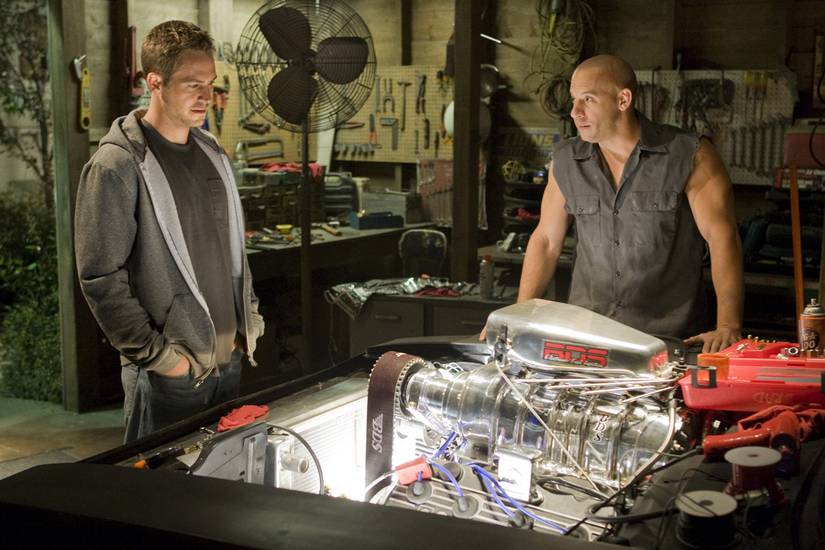Dominic Toretto’s 1970 Dodge Charger R/T is more than just a car—it’s a cultural icon from The Fast and the Furious franchise, embodying raw power and emotional significance. Here are 10 lesser-known facts about this legendary vehicle, drawn from its role in the films and behind-the-scenes details, while critically examining the narrative around its creation and use.

- Not Always a 1970 Model: While Dom’s Charger is famously called a 1970 Dodge Charger R/T, many of the cars used in the films were actually 1968 or 1969 models modified to resemble the 1970 version. The 1970 R/Ts are rare, with only 112 produced with the 426 Hemi engine, so filmmakers used earlier models, altering grilles, hoods, and fenders to match the 1970 aesthetic. The 1969 had a chrome center divider grille, while the 1970 featured an open grille with a horizontal divider, which Mopar fans can spot.
- Emotional Backstory: In the first film, The Fast and the Furious (2001), Dom reveals the Charger was built with his father, who died in a stock car racing accident. The car, boasting 900 horsepower and a 9-second quarter-mile time, sat in the Toretto family garage because Dom was too scared to drive it after his father’s death. This emotional weight makes it more than just a muscle car—it’s a symbol of Dom’s connection to his father.
- Fake Supercharger for Show: The massive supercharger sticking out of the hood in the first film was a fake BDS 8-71 Roots-style unit, purely for visual impact. The “hero” car’s engine, shown in the garage scene, was a 445-cubic-inch Hemi borrowed from Chuck Taylor Racing Engines, but it was returned after filming and not used for driving scenes due to its impractical power for controlled shoots. Stunt cars used less powerful 440 Magnum or 318 engines.
- Multiple Chargers Built: To handle the intense stunts, the production team built multiple Chargers. For The Fast and the Furious, at least three stunt cars were used: one for the drag race, one for crashing into a semi-truck, and another for sliding into a motorcycle. For Furious 7, eleven off-road Chargers were constructed, some reduced to mere shells for specific stunts like parachuting from a plane.
- Vin Diesel’s Personal Influence: Vin Diesel, a real-life Mopar enthusiast, heavily influenced the choice of the 1970 Charger for Dom’s character. While he didn’t produce the first film, his passion for muscle cars ensured the Charger became Dom’s signature ride. Diesel owns several Mopars, including a 1970 Charger Daytona from Fast & Furious 6, but surprisingly, he doesn’t own any of the film’s 1970 R/Ts.

6. Modified for Stunts: The Charger’s specs in the films include high-performance parts like Hedman headers, Hotchkis suspension, Wilwood disc brakes, and a Flowmaster exhaust, with Nitrous Oxide for extra speed. For Furious 7’s off-road scenes, stunt Chargers were fitted with LS or SRT motors and reinforced with parts from a military Jeep for added durability. These modifications prioritized stunt practicality over authenticity, which some purists criticize.
7. Repeatedly Destroyed and Rebuilt: Dom’s Charger has been wrecked multiple times across the franchise—in crashes, rollovers, and explosions—yet it always returns. In Fast & Furious (2009), Letty Ortiz begins restoring it, and Dom completes the rebuild after her presumed death. This cycle of destruction and revival mirrors Dom’s resilience but stretches believability, as real 1970 R/Ts are too rare to be so casually replaced.
8. Cultural Icon Over General Lee: The Charger overtook the Dukes of Hazzard’s General Lee as the most iconic Mopar in film history. Its sleek black design and association with Dom’s anti-hero persona gave it a modern edge, appealing to a new generation of car enthusiasts. Unlike the General Lee, which was tied to a specific era, the Charger’s timeless appeal spans decades.
9.Unrealistic Performance Claims: Dom claims the Charger runs a 9-second quarter-mile with 900 horsepower, but fans on platforms like Reddit argue this is unlikely for a 3,000-pound car, even with a supercharged V8. Achieving that time would require extreme modifications like steep rear gears, a trans brake, and over 1,200 ft-lb of torque—far beyond what’s practical for filming. The real stunt cars were less powerful to ensure control during shoots.
10. Collector’s Dream and Replica Boom: The Charger’s fame has driven up real-world demand, with pristine 1970 R/Ts fetching high prices (though not as high as the $3.74 million for the 1968 Bullitt Mustang). A matte gray Charger from Fast & Furious (2009) was listed for $200,000, far above the standard $28,995–$74,900 range for a 1970 R/T. Fans have built detailed replicas, like one by YouTube’s Just Driven, with a 572-cubic-inch supercharged V8, showcasing the car’s enduring allure.


